How to support autistic children in group learning settings
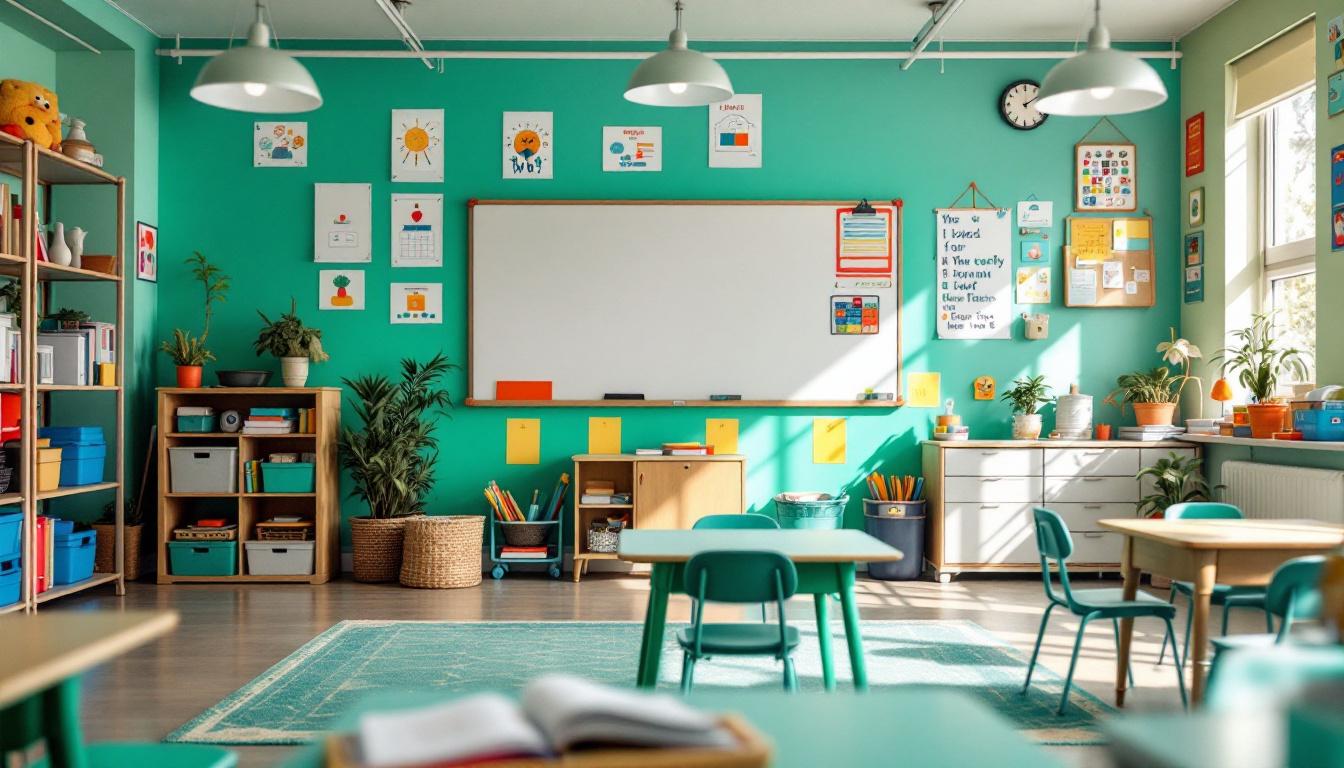
Understanding the Foundations of Supporting Autistic Students in Group Settings
Supporting children with autism in group learning environments requires a multifaceted approach that integrates evidence-based practices, tailored modifications, and a nurturing environment. This article explores strategies, resources, and best practices aimed at fostering inclusive, supportive, and effective learning experiences for autistic children. From classroom adaptations to social skills development, educators and caregivers will find comprehensive guidance on promoting participation, communication, and emotional regulation, ensuring every child's potential is realized.
Implementing Effective Training and Educational Programs for Educators and Caregivers
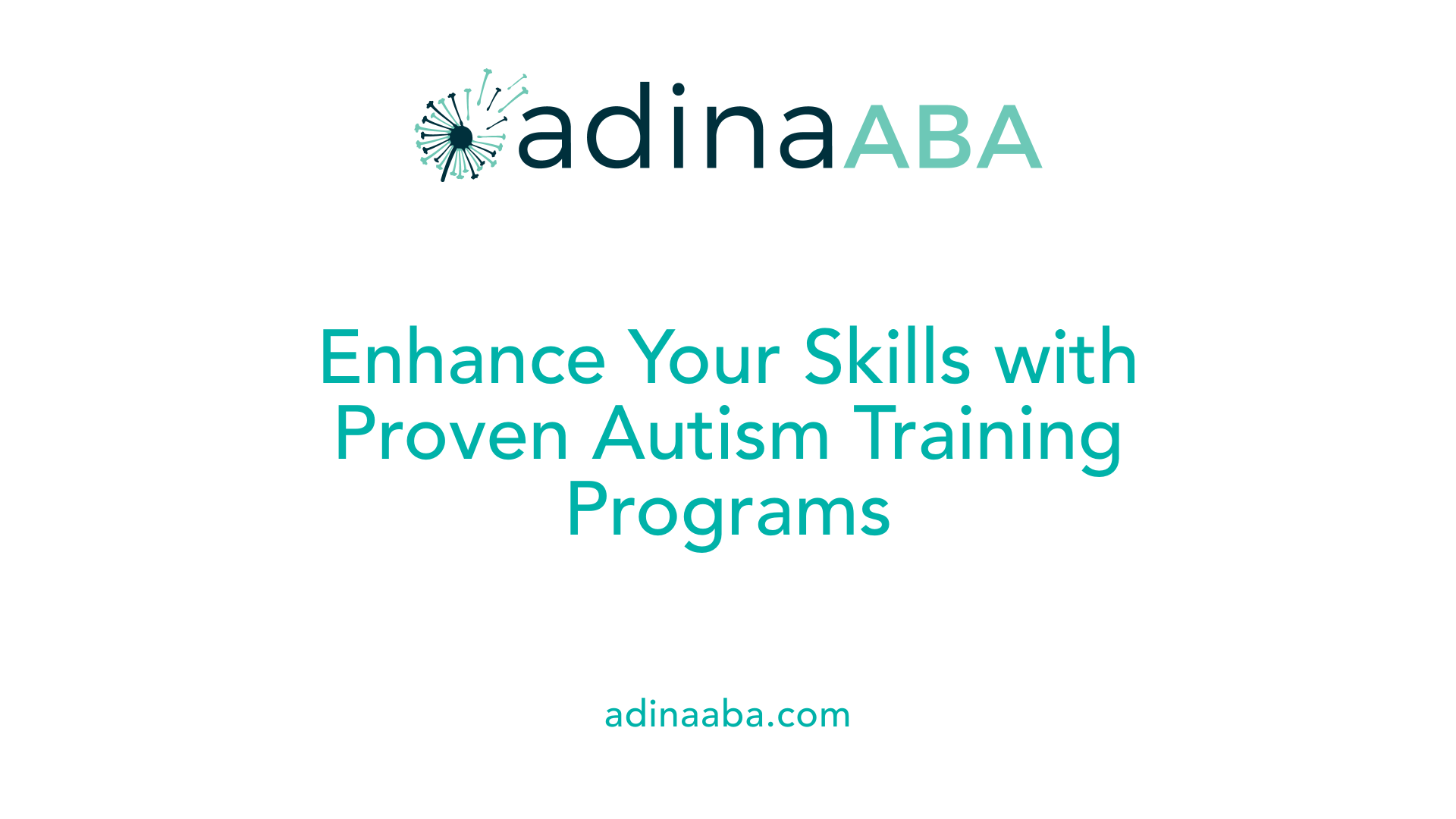
What training and educational programs are available to support children with autism in classroom and group settings?
Supporting children with autism in educational environments requires specialized training for educators and caregivers. Several programs provide proven strategies and guidelines to enhance understanding and intervention.
One prominent example is the Caregiver Skills Training (CST) program, developed through a collaboration between the World Health Organization (WHO) and Autism Speaks. This evidence-based training emphasizes practical skills, focusing on improving communication, fostering engagement, and supporting daily routines and play. By guiding caregivers on how to integrate support into everyday activities, CST helps create a more inclusive and responsive learning environment.
Autism Speaks offers its own virtual platform called eCST, which includes self-paced online courses, instructional videos, and downloadable resources. This accessible platform caters to both families and professionals, providing relevant tools to support children with autism across different settings.
For more targeted and research-based instruction, ASD Strategies in Action is an excellent resource. It provides courses on practical techniques supported by current research, covering age-specific needs and intervention strategies. Professionals can earn certifications and continuing education credits through these courses, ensuring they stay updated with best practices.
In addition to these specialized programs, federal health agencies contribute significantly to training efforts. The Health Resources and Services Administration (HRSA) supports programs like the Leadership Education in Neurodevelopmental and Related Disabilities (LEND) and Developmental Behavioral Pediatrics (DBP). These initiatives aim to enhance early intervention services, behavioral support, and transition planning—integral aspects of comprehensive autism support.
Support initiatives also include targeted training modules by local and national organizations, designed to keep educators informed about the latest research and intervention strategies. This continuous professional development is crucial for adapting classroom practices and ensuring a supportive environment for autistic students.
| Program Name | Focus Area | Delivery Method | Target Audience | Additional Notes |
|---|---|---|---|---|
| Caregiver Skills Training (CST) | Communication, Play, Routines | In-person, Online | Caregivers, Parents | Developed by WHO and Autism Speaks |
| Autism Speaks eCST | Self-paced Courses, Videos | Virtual platform | Families, Professionals | Free resources, accessible globally |
| ASD Strategies in Action | Practical Intervention, Certification | Online | Educators, Therapists | Focused on research-based strategies |
| HRSA LEND & DBP Programs | Early Intervention, Behavioral Support | In-person, Hybrid | Healthcare Providers, Educators | Supported by federal government |
These programs collectively support a comprehensive, multi-level approach to autism education, equipping educators and caregivers with the skills necessary to enhance learning and social integration for children on the spectrum.
How do these training programs align with best practices in autism education?
The outlined training initiatives follow evidence-based approaches that emphasize individualized strategies, early intervention, and meaningful communication. They promote understanding of sensory and behavioral needs, support the development of social skills, and foster inclusive practices. By integrating visual supports, concrete language, and structured routines—core components highlighted in research—they enable educators and caregivers to effectively support autistic children.
Continual professional development through these programs ensures that strategies evolve with emerging research, enabling a dynamic and responsive approach to autism support.
Classroom Modifications and Environmental Adjustments

What classroom modifications can support students with autism?
Supporting students with autism in the classroom requires thoughtful modifications to create an environment conducive to learning, engagement, and emotional well-being. One of the most effective strategies is establishing sensory-friendly spaces. These are calm, quiet areas equipped with tools such as weighted blankets, soft lighting, noise-canceling headphones, and fidget toys. Such spaces offer students a refuge when they feel overwhelmed, helping them self-regulate sensory input.
Visual supports form another cornerstone of effective classroom adaptation. Visual schedules, social stories, and visual cues help children anticipate routines, understand behavioral expectations, and navigate social interactions. These tools provide clarity and reduce anxiety by making daily activities predictable. For example, a visual timetable displaying morning, lunch, and recess activities helps students know what to expect and prepares them for upcoming transitions.
Flexible seating and movement options can also improve focus and sensory regulation. Options such as adjustable tables, wobble chairs, standing desks, or seating arrangements that allow movement can address sensory sensitivities and attentional needs. Incorporating regular movement breaks or allowing students to use fidget items contributes to better attention and reduces stress.
Structured routines paired with clear expectations support participation and reduce behavioral challenges. Using visual schedules combined with consistent verbal cues ensures students understand daily expectations. Teachers can also tailor assignments or tasks to accommodate sensory sensitivities or communication needs, providing modifications as required.
In addition to environmental modifications, classroom strategies focus on fostering social skills and communication. Peer support, social stories, and targeted interventions encourage positive social interactions. Assistive technologies, such as communication apps or devices, further enhance participation and expression.
Furthermore, implementing targeted sensory supports—such as quiet corners with calming activities, sensory bins, or slime experiments—helps students manage sensory overload. Using sensory tools like noise-canceling headphones or sensory swings during free time offers additional ways to meet individual sensory requirements.
By integrating these modifications—sensory-friendly spaces, visual supports, adaptive seating, and sensory accommodations—educators can significantly improve participation, reduce anxiety, and foster a positive, inclusive learning environment.
| Modification Type | Details | Purpose |
|---|---|---|
| Sensory Spaces | Calm corners, sensory tools | Regulation and self-soothing |
| Visual Supports | Schedules, social stories, cues | Clarity, predictability |
| Seating Arrangements | Adjustable chairs, wobble stools | Focus and sensory needs |
| Routine Structure | Consistent schedules, advance warnings | Reduce anxiety, manage transitions |
| Sensory Accommodations | Noise-canceling headphones, fidget toys | Sensory regulation |
| Social Support Strategy | Peer pairing, social skills training | Enhance social integration |
Supporting autistic students effectively involves more than just environmental adjustments. A collaborative approach—including input from special educators, occupational therapists, speech-language pathologists, and families—is crucial to tailor strategies that meet individual needs.
When implemented thoughtfully, these classroom modifications foster a sense of safety, promote independence, and encourage active participation for students with autism, laying the foundation for successful learning experiences.
Strategies to Enhance Focus and Engagement During Group Activities

What practical strategies to help autistic children focus during group activities?
Supporting children with autism in group settings involves multiple tailored approaches that create a predictable and sensory-friendly environment. Establishing clear routines and visual supports like pictorial schedules and visual timers helps children anticipate transitions and understand expectations, reducing anxiety and promoting focus.
Sensory tools are crucial; items such as fidget toys, weighted blankets, and noise-canceling headphones provide sensory regulation and help children self-soothe amid busy or noisy environments. Creating a designated quiet zone offers a safe space for children to withdraw if they feel overwhelmed, enabling them to regain composure and re-engage.
Instructions should be straightforward and visually guided. Breaking tasks into small, manageable steps with pictorial cues makes instructions easier to understand and follow. Using minimal words and incorporating visual demonstrations or gestures further supports comprehension.
Positive reinforcement plays a vital role. Descriptive praise, such as “Great job staying seated and listening,” reinforces desired behaviors and encourages participation. Using tangible rewards aligned with each child's motivation and reinforcing social interactions through peer modeling foster a positive and inclusive atmosphere.
Supporting communication disparities by utilizing visual aides or augmentative communication devices ensures all children can express themselves and understand instructions effectively.
Involving families and caregivers maintains consistency between home and school environments. Their insights help tailor strategies to each child's unique needs, creating a cohesive support system.
Overall, blending visual supports, sensory strategies, clear communication, and positive feedback constructs a nurturing environment where autistic children can remain engaged and thrive during group activities.
Resources and Guidance for Supporting Autism Inclusion
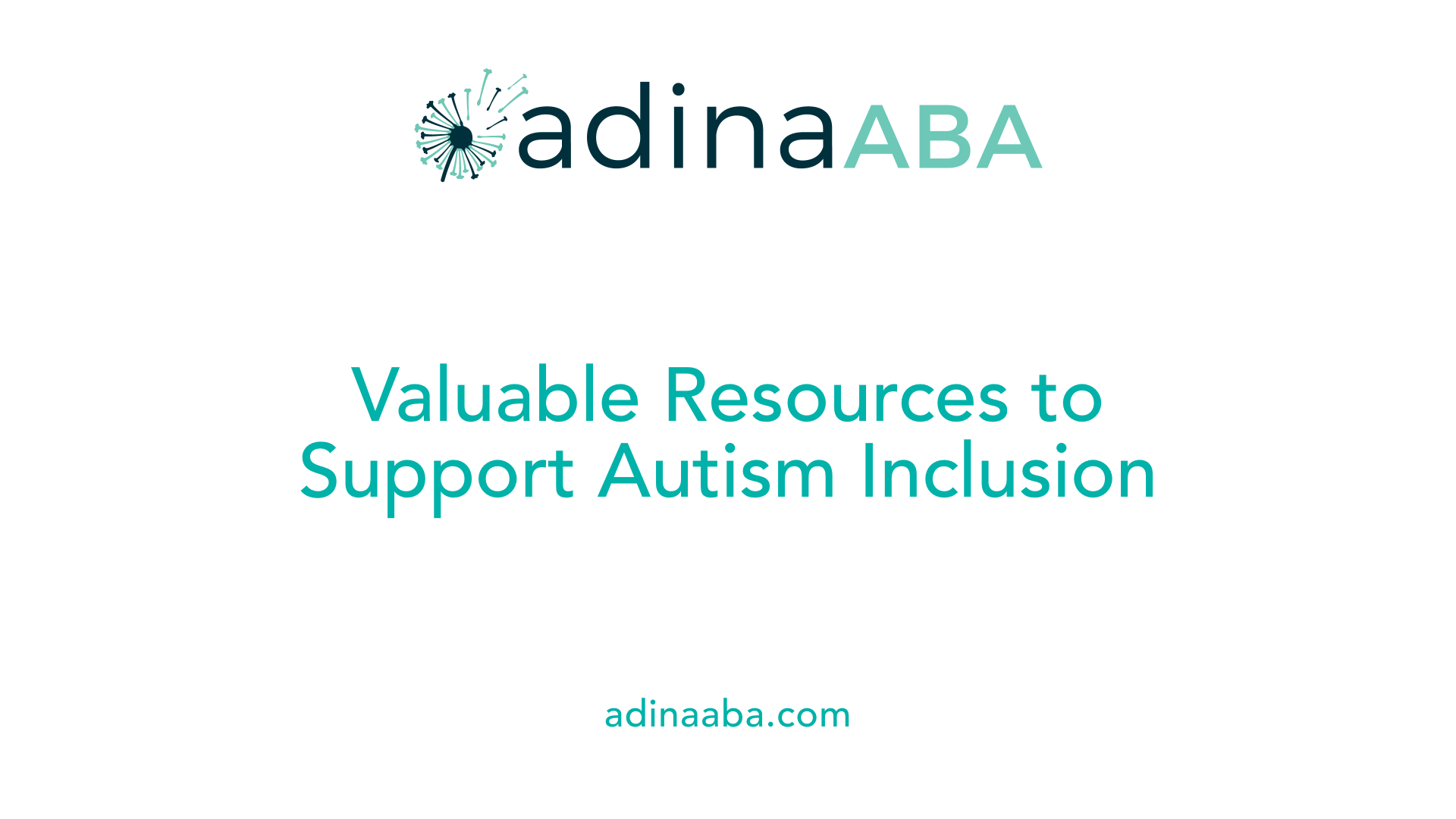
What resources and guidance are available for educators and caregivers to support autism inclusion in educational settings?
Supporting children with autism in schools involves utilizing a range of effective resources and strategies that promote inclusive learning environments. Evidence-based programs such as the Incredible Years and Structured Teaching provide comprehensive training for teachers and support staff. These programs focus on enhancing social interaction, managing classroom behavior, and making appropriate adjustments to meet students’ needs.
Organizations like Autism Speaks are valuable sources of information, offering toolkits, online guides, and practical advice to foster inclusivity. These resources emphasize the importance of sensory-friendly spaces, visual supports, and consistent routines, which help reduce anxiety and support successful participation.
Applying the principles of Universal Design for Learning (UDL) ensures that lessons are accessible and engaging for all students, regardless of their learning styles. Teachers are encouraged to collaborate closely with families, support staff, and the student’s Individualized Education Program (IEP) team to tailor interventions that address specific needs.
Creating sensory-friendly environments with tools such as noise-canceling headphones and calming areas, along with fostering positive peer relationships through structured activities and social stories, can greatly enhance social skills development.
Positive reinforcement strategies, including praise and reward systems, motivate students and promote desired behaviors. Understanding and upholding legal rights under the Individuals with Disabilities Education Act (IDEA) ensures that students with autism receive appropriate accommodations, early interventions, and access to assistive technology.
In summary, available resources and guidance combine evidence-based practices, community support, and legal frameworks to create environments where children with autism can thrive academically, socially, and emotionally.
Best Practices for Supporting Autistic Children in Group Learning Environments
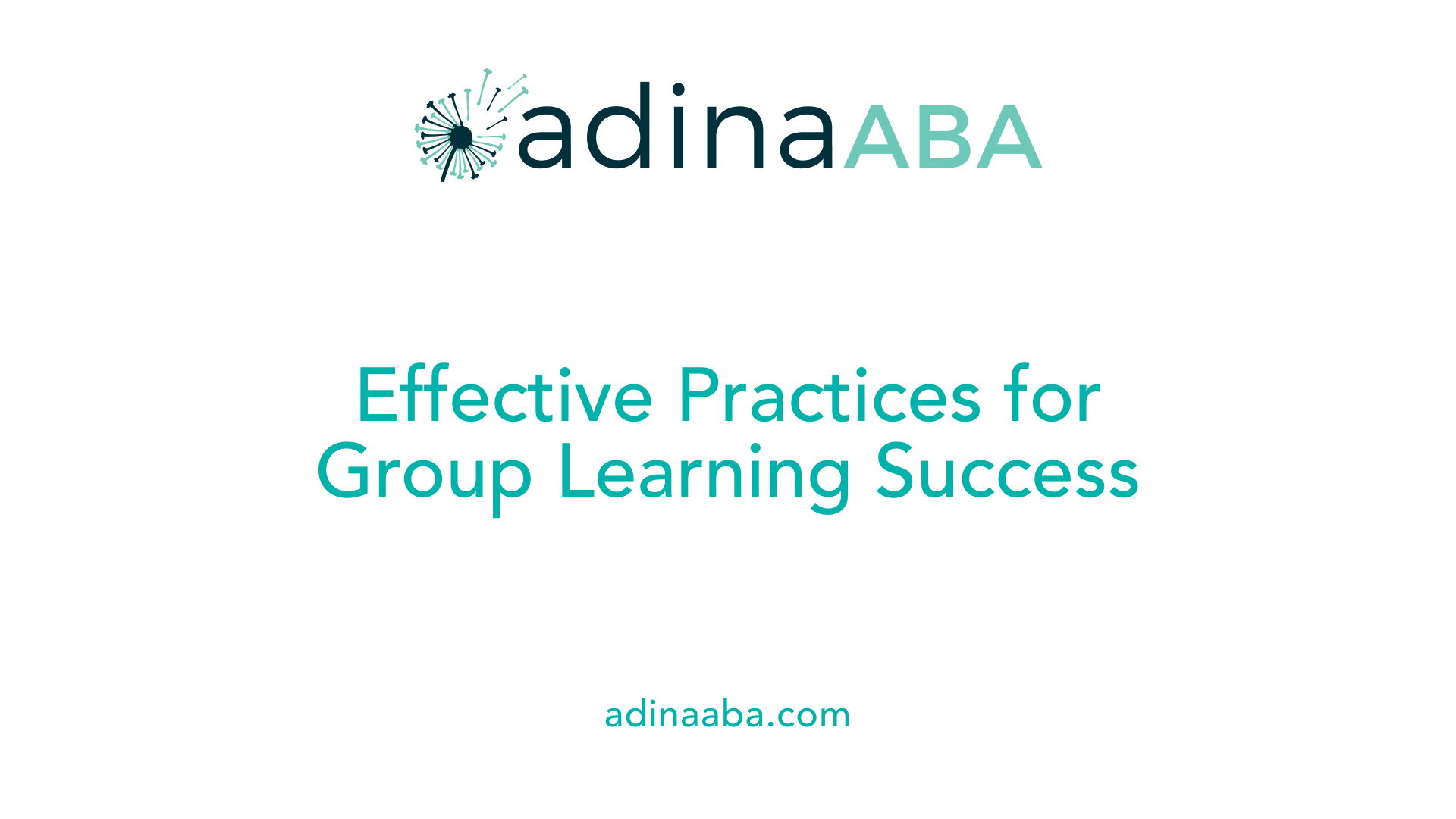
What are effective strategies and best practices for supporting autistic children in group learning environments?
Supporting autistic children in group settings involves several thoughtful strategies designed to create an inclusive, supportive, and effective learning environment. Establishing predictable routines is essential; visual schedules and consistent daily structures help children understand what to expect and reduce anxiety surrounding transitions or unexpected changes.
Creating sensory-friendly spaces within the classroom plays a crucial role. These areas, equipped with tools like noise-canceling headphones, fidget toys, weighted blankets, and calm lighting, give children a safe haven for self-regulation when sensory overload occurs.
Teacher modeling of positive behaviors is vital. Demonstrating respectful greetings, engaging with students kindly, and reinforcing desired behaviors through descriptive praise helps foster a supportive social climate. Using social stories, visual cues, and simple language promotes understanding of rules and social expectations.
Effective communication supports comprehension and participation. Visual supports such as social cue cards, visual schedules, and emotion visuals help children interpret social and emotional cues accurately. Tailoring communication methods—such as using AAC devices, picture exchange systems, or signing—ensures each child's needs are met.
Peer interactions are fundamental for social development. Strategies like buddy systems, small group activities, and cooperative games promote social skills and inclusion. Encouraging positive peer modeling and role-playing helps children learn appropriate social behaviors in a natural context.
Incorporating each child's interests into lessons increases engagement and motivation. Using games, music, and hands-on activities aligned with personal interests enhances focus and learning outcomes.
Sensory considerations should be integrated throughout teaching. Adjusting noise levels, incorporating sensory breaks, and providing sensory tools help manage sensory sensitivities and prevent overload.
Collaborating with families and specialists ensures support strategies are consistent and tailored. Sharing insights about individual needs and progress allows for more effective interventions and adjustments.
Finally, promoting emotional regulation through routines, safe spaces, and coping tools helps children manage their feelings and reactions, fostering a more adaptive learning environment. Overall, implementing these practices creates a nurturing space where autistic children can thrive, develop social skills, and engage meaningfully in group learning.
Making Group Environments Accessible and Supportive for Autistic Children

How can educators make group learning environments more accessible and supportive for autistic children?
Creating an inclusive and nurturing group environment for autistic children involves multiple strategies tailored to their unique needs. Visual supports such as daily schedules, social stories, and visual cues are essential tools. These supports help children understand routines and social expectations, reducing anxiety and fostering independence.
Establishing predictable routines and clear boundaries offers stability, which is vital for sensory regulation and emotional comfort. Visual schedules that outline daily activities and signals for transitions enable children to prepare for changes, easing their stress.
Sensory accommodations are equally important. Providing sensory-friendly spaces equipped with noise-canceling headphones, fidget toys, soft lighting, and calming tools can prevent sensory overload. Creating quiet zones or retreat areas allows children to self-regulate and manage their sensory sensitivities.
Differentiated instruction ensures that learning activities are accessible to all students. Simplifying language, breaking tasks into manageable steps, and using visual aids support understanding and engagement. Individualized plans, often detailed in school IEPs, allow educators to tailor their approaches and incorporate specific accommodations.
Promoting social inclusion starts with modeling positive interactions, encouraging peer support through buddy systems, and facilitating structured social skills activities. Group projects, role-playing, and social stories teach children appropriate social cues and cooperation. Inclusive activities help reduce social isolation and build peer relationships.
Addressing sensory and behavioral needs through collaborative approaches enhances effectiveness. Collaboration involves parents, therapists, and educators sharing insights and strategies. Using consistent interventions across home and school settings ensures that children receive unified support.
Supporting emotional regulation is also critical. Providing safe spaces, practicing mindfulness, and teaching emotion recognition with visual emotion cards helps children manage their feelings and behaviors.
In summary, making group environments more accessible for autistic children requires a combination of visual supports, sensory-friendly modifications, personalized instruction, social inclusion practices, and collaborative teamwork. These efforts foster a positive atmosphere in which autistic children can participate fully, learn effectively, and develop social skills.
Supporting Social Skills Development with Evidence-Based Interventions
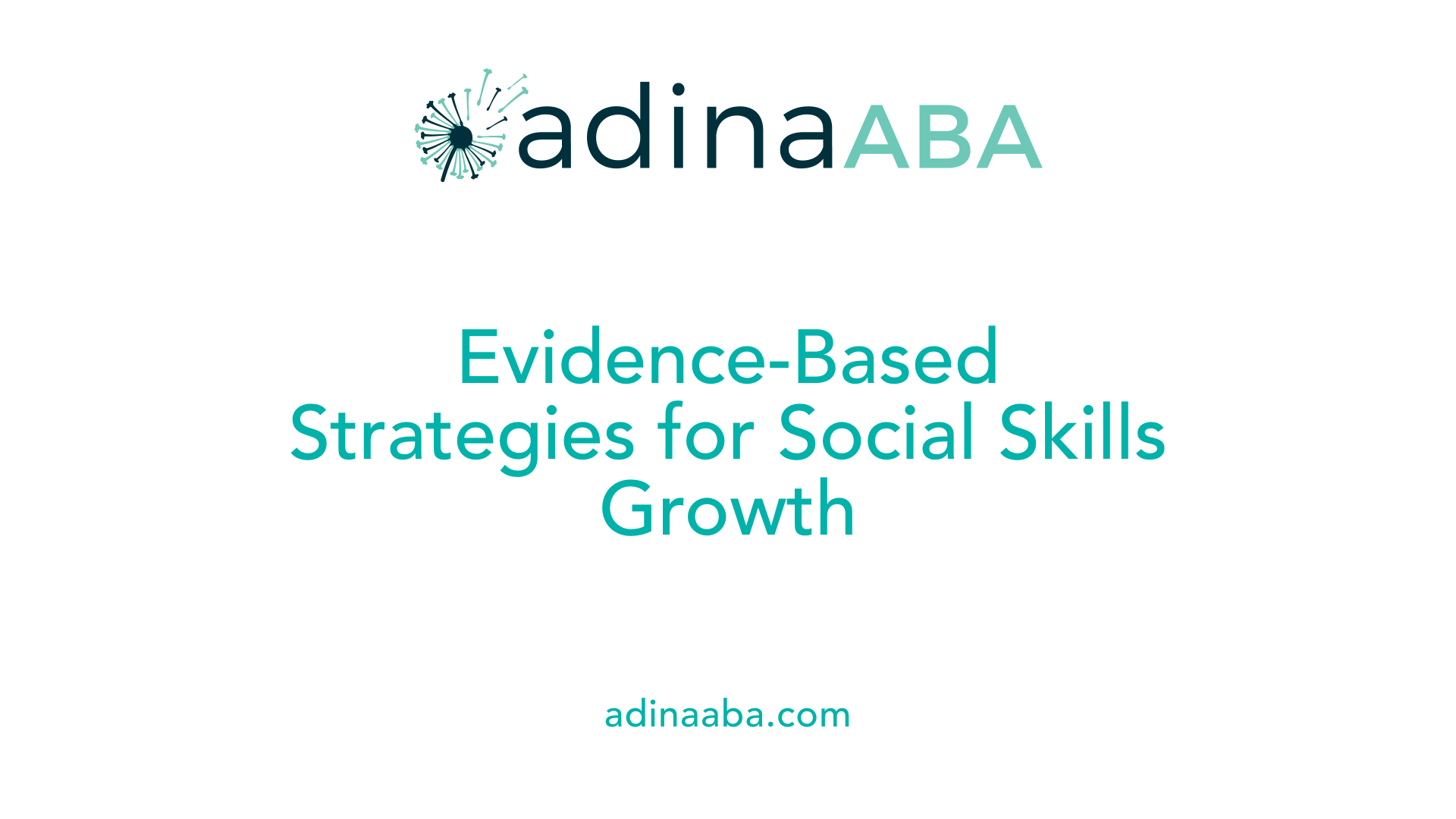
What evidence-based methods for promoting social skills development in children with autism?
Supporting children with autism in developing social skills involves using approaches backed by research. One of the most well-supported strategies is video modeling. This method involves showing children videos of desired behaviors or social interactions, allowing them to observe and imitate these actions. Video modeling has demonstrated high effectiveness, with strong evidence indicating it can improve social engagement.
In addition to video modeling, social narratives are widely used. These are simple stories that explain social situations, appropriate responses, and expectations, helping children understand social cues and improve their behavioral responses.
Peer-mediated instruction also plays a vital role. This approach involves training peers to interact positively and model social behaviors, fostering natural social opportunities. Naturalistic strategies that blend learning into everyday activities—like incidental teaching and pivotal response training—are effective in promoting spontaneous social interactions.
Various structured interventions complement these methods. Discrete Trial Teaching (DTT) provides systematic teaching through repeated trials, while Functional Communication Training (FCT) helps children develop alternative communication skills that support social interactions.
Emerging technology-based tools—such as computer programs, social apps, and virtual avatars—offer engaging ways for children to practice social skills. These tools often incorporate visual and interactive elements that resonate with learners.
Combining these approaches—integrating visual supports, peer interaction, and technology—can lead to meaningful improvements. Customizing strategies based on each child's individual needs and consistently applying them with fidelity are essential. Ongoing progress monitoring and data collection help in refining interventions to maximize social development outcomes.
Understanding Barriers and Supporting Emotional Regulation

Are autistic individuals likely to struggle in group settings, and what support do they need?
Autistic individuals often face challenges in group environments due to difficulties in social skills. These include initiating conversations, understanding social cues, and sharing experiences with others. Such challenges can cause feelings of being overwhelmed, isolated, or excluded during social activities or in the community.
To help overcome these barriers, targeted supports are crucial. These include social skills training, explicit instruction, and participation in social groups or community programs designed specifically for children with autism. Visual aids, structured routines, and opportunities for real-life practice are effective tools for helping autistic individuals grasp social expectations and navigate interactions with greater confidence.
With the right accommodations and support systems in place, children and adults with autism can develop essential social skills. These enhancements enable meaningful participation in group settings, fostering friendships and a sense of belonging.
Common social and sensory challenges
Children with autism often experience sensory processing difficulties that influence their social interactions. Common challenges include sensitivity to loud noises, bright lights, or crowded spaces, which can lead to sensory overload.
Social challenges also encompass difficulty interpreting facial expressions, body language, and tone of voice. These issues may result in misunderstandings or social withdrawal.
Recognizing and Labeling Emotions
Supporting children with autism involves helping them recognize and understand their feelings. Using emotion cards, visual cues, or social stories can be effective methods for teaching emotion labeling. Validating their feelings and modeling emotional regulation strategies are essential for fostering emotional awareness and self-control.
Calming Spaces and Grounding Techniques
Creating designated calming areas is beneficial for children overwhelmed by sensory input or emotions. These spaces should be quiet, comfortable, and equipped with calming tools such as weighted blankets, soft lighting, and sensory toys like fidget objects or stress balls.
Grounding techniques, including deep breathing, mindfulness exercises, or the use of calm-down kits, can assist children in self-regulating during moments of sensory overload or emotional distress. Consistent routines and visual schedules also contribute to predictability, reducing anxiety and promoting a sense of security.
| Aspect | Strategies | Supporting Details |
|---|---|---|
| Social Challenges | Social skills training, peer modeling, structured group activities | Using visual supports, social stories, and role-playing to teach social norms |
| Sensory Difficulties | Sensory-friendly spaces, sensory tools, environmental adjustments | Noise-canceling headphones, fidget toys, calming lights |
| Emotional Recognition | Visual emotion cards, modeling, validation | Teaching children to label and express their feelings openly |
| Self-Regulation Tools | Calm spaces, grounding techniques, routines | Deep breathing, mindfulness exercises, designated calming zones |
By understanding these barriers and implementing supportive strategies, educators and caregivers can foster a more inclusive environment. This approach helps autistic children develop vital social and emotional skills, promoting better integration and well-being in school and community settings.
Fostering Inclusion and Success in Group Learning
Creating an inclusive and supportive environment for autistic children in group learning settings is a shared responsibility involving educators, caregivers, specialists, and peers. By implementing targeted modifications, engaging in continuous professional development, and using evidence-based social skills programs, educational communities can significantly enhance participation, learning, and social integration. Ongoing collaboration, personalized plans, sensory-friendly environments, and promoting understanding and acceptance not only help autistic children thrive academically but also foster their emotional well-being and social development. Building these supportive frameworks ensures that every child is valued, understood, and empowered to reach their full potential in inclusive learning environments.
References
- Autism in the classroom: Strategies for success
- Effective Classroom Strategies for Teaching Students with Autism
- Supporting Children with Autism in Preschool Settings
- 24 Classroom Activities for Kids with Autism | Waterford.org
- How To Provide Effective Whole Group Instruction in Special ...
- Educational Support for individuals with Autism: Creating Inclusive ...
- Teaching Social Skills to Children with Autism - - Special Learning
- Strategies in supporting inclusive education for autistic students—A ...
More Resources
Expert Clinicians
Get started today ->






